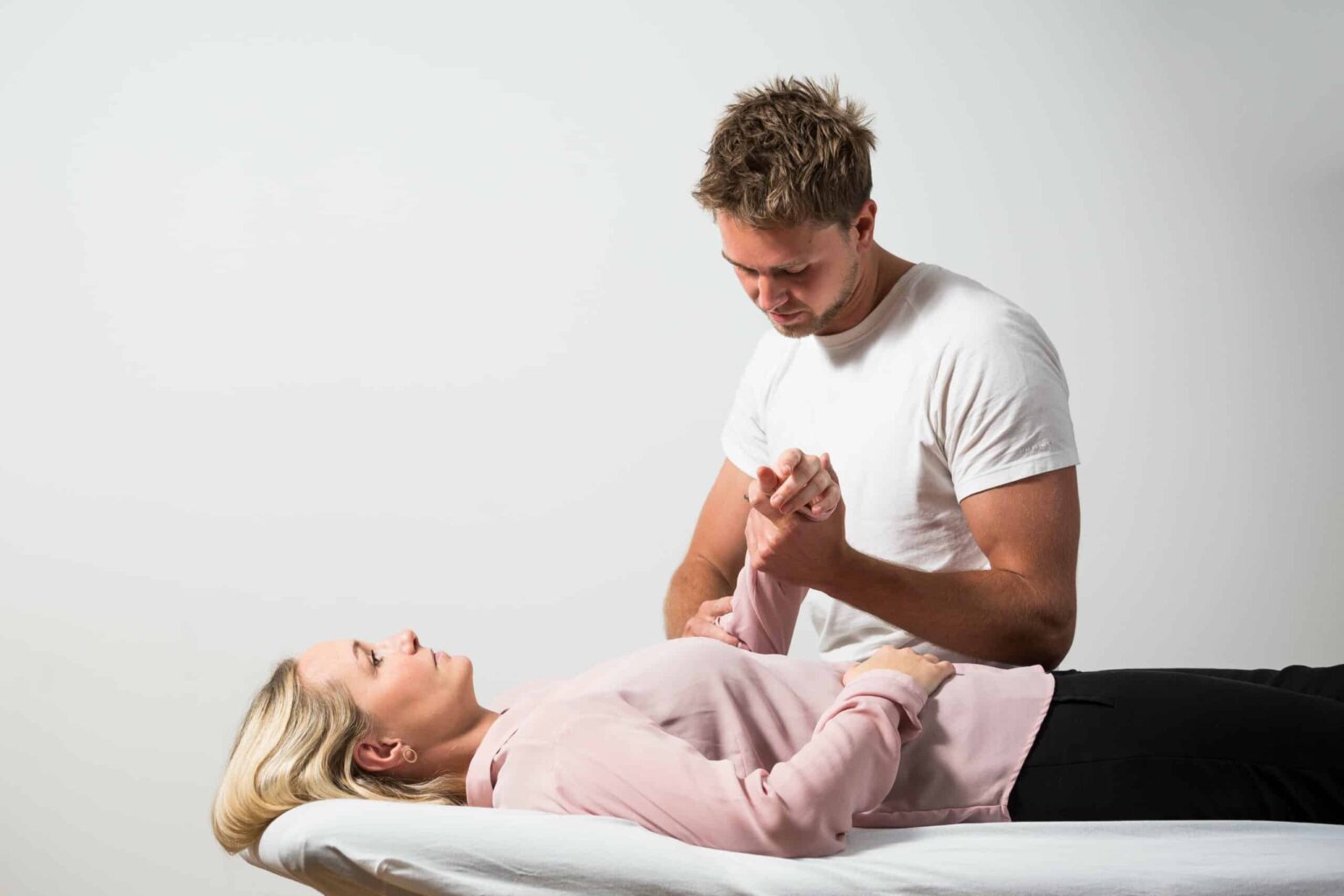We treat
Hip pain and groin pain
Learn more about hip and groin pain
Hip and groin pain
Hip and groin pain are relatively common. We often treat patients with hip pain. Hip pain can occur in many people, including ballet dancers, soccer players, and runners.
Jump to section [Vis]
How does hip and groin pain occur?
Groin and hip injuries often occur in sports that require rapid acceleration, explosive movements and/or many repetitions. Swedish studies have shown that groin pain accounts for between 5-13% of all football injuries in men and approximately 4% in women.
Where can hip and groin pain occur?
Hip and groin injuries can occur in different places in the hip region.
- in and around the muscles that lead the leg inward
- in and around the hip flexors of the hip joint
- in and around the abdominal muscles that are attached to the pubic bone
- in and around the upper part of the thigh muscles
These injuries can become permanent and are often the reason athletes do not return to their sport.

Pain in the adductors (groin muscles)
These muscles originate from various locations on the pelvis and have attachments at the top of the femur. The muscles receive nerve supply from nerves coming from the 2nd-4th lumbar vertebrae. The adductors receive blood supply from blood vessels that run through the pelvis to the muscles in the groin.
Causes of pain in the adductor muscles
There are many causes of adductor problems. The circulatory, nervous, musculoskeletal and metabolic systems can all play a role.
Blood supply to the groin
Blockage of blood supply to the adductors (groin pain) due to bladder problems and hip external rotation. The cause here is often urinary tract infections.
Lower back and groin
Locking of the lumbar vertebrae that supply nerves to the adductors. This leads to overactivation of the nerves, which increases the tension in the muscles (groin pain).
The pelvis and groin
Poor mobility or pelvic tilt can lead to overstretching of the adductors (irritation in the groin), which increases the risk of injury (groin injury).
Hip flexor muscle
The hip flexor originates at the top of the front of the back, extends across the pelvis and has an attachment on the inside of the thigh bone. The hip flexor receives nerve supply from the lowest thoracic vertebra and the two upper lumbar vertebrae. The connective tissue that covers the hip flexor has an anatomical connection to the kidneys and the respiratory muscle itself. The blood supply to the hip flexor comes directly from the main artery itself.
Pain in the abdominal muscles/stomach muscles
Three different abdominal muscles originate from the pubic bone itself, two obliques and one rectus abdominis. These muscles can be injured, but often other structures in the area are the cause of the discomfort (pain in the hip flexors / pain in the groin).
Causes of abdominal muscle injuries
Locking of the lower thoracic vertebrae and the upper lumbar vertebrae. This we experience causes overactivation of the nerves which increases the elasticity of the muscle (pain in the hip flexor).
Stomach problems and the hip flexor
In the case of poor movement of the pelvis, lower back and or hip, we experience that the freedom of movement of the muscle can be restricted (irritation in the hip flexor). Bloating in the abdominal region, which can lead to poorer blood supply to and from the muscle (pain in the hip flexor).
Pelvis, lower back and hip flexors
Poor mobility of the pelvis, lower back and/or hip can limit the freedom of movement of the muscle (irritation in the hip flexor).
The kidneys and the hip flexor
Problems with the kidneys or renal ducts can cause increased tension in the muscle’s connective tissue, thereby causing irritation in the hip flexor.
Breathing and the hip flexor
A tense respiratory muscle can cause increased tension in the muscle’s connective tissue, thereby creating pain in the hip flexor.

Good advice for hip and groin pain
- Keep the pelvis free from restrictions by stretching the thighs (front/back/inner/outer)
- Make sure to maintain optimal fluid balance by drinking between 2-4 liters of water per day (depending on size and activity level)
- Be especially aware that recurring bladder infections, pelvic floor problems or constipation may contribute to these injuries.
- Back pain, knee pain, and stomach problems we experience can also contribute to hip and groin pain.
Listen to your body, give it a break if your legs feel heavy and tired.
Causes of hip flexor muscle injury
The hip flexor can be affected by many structures and factors. The most common ones are the nervous system, the organ system, the musculoskeletal system, as well as the metabolic system.
The back and hip flexors
Locking of the lower thoracic vertebrae and the upper lumbar vertebrae. This we experience causes overactivation of the nerves which increases the tension of the muscle (pain in the hip flexor).
Stomach problems and the hip flexor
We experience poor mobility of the pelvis, lower back and/or hip, which can limit the freedom of movement of the muscle (irritation in the hip flexor). Bloating in the abdominal region, which can lead to poorer blood supply to and from the muscle (pain in the hip flexor).
Pelvis, lower back and hip flexors
We experience poor mobility of the pelvis, lower back and/or hip which can limit the freedom of movement of the muscle (irritation in the hip flexor).
The kidneys and the hip flexor
Problems with the kidneys or renal ducts we experience can cause increased tension in the muscle’s connective tissue and thereby create irritation in the hip flexor.
Breathing and the hip flexor
A tense respiratory muscle can cause increased tension in the muscle’s connective tissue, thereby creating pain in the hip flexor.

The upper part of the thigh muscles can cause groin pain
These muscles originate from the front of the pelvis and these areas are close to the groin itself. These muscles can be injured, but often there are other structures in the area that cause discomfort (groin pain / hip pain).
Causes of thigh muscle injuries
The thigh contains nerves, blood vessels, and other connective tissue. These structures can contribute to thigh pain. In addition, protrusions and attachments from the skeleton can also contribute to the problem.
Pelvis, hip and thigh muscle
Reduced mobility in the pelvis, hip or knee can lead to damage to these muscles (damage to the thigh muscle).
Pelvis, lower back and hip flexors
Poor mobility of the pelvis, lower back and/or hip can limit the freedom of movement of the muscle (irritation in the hip flexor).
The lower back and thigh muscle
Locking in 2-4 lumbar vertebrae. This causes overactivation of the nerves which increases the elasticity of the thigh muscles (fiber damage / pain in the thigh muscle.
Inguinal hernia
Inguinal hernia, protrusion of a canal located in the area.
The nerve supply of the thigh muscle
Pinching of nerves that supply the groin area, pubic area and abdomen. Often associated with kidney problems. This can cause fiber damage in the thigh, thigh pain or thigh pain.
Symptoms of hip and groin pain
Symptoms of hip and groin pain are often experienced during everyday activities such as walking, running or sitting for too long. The mobility of the hip will often be affected, making it difficult for the hip joint to flex, internally rotate and extend.
The pain can be deep, sharp, or aching.
Hip and groin pain at night
When pain in the hip or groin is experienced at night, it is often due to inflammation or an inflammatory condition caused by overload, rheumatic diseases or trauma.
Hip and groin pain while walking and running
Hip or groin pain is quite common during walking and running. Causes of this can include inflamed or irritated hip flexors, osteoarthritis, hip dysplasia, problems with the hip labrum, bursitis (sac), hip instability, etc.

Hip and groin pain and pain down the leg
This type of problem can be caused by irritation or damage to the nerves that pass through the hip and groin. The obturator nerve, sciatic nerve, and femoral nerve are the most common. Pain down the leg can also be caused by severe osteoarthritis in the hip or muscular problems in the thigh, groin, or hamstrings.
Hip and groin pain in the side
Hip pain in the side may indicate trochanteric bursitis (bursitis), osteoarthritis of the hip, or muscular injuries in the buttock and hip.
Hip and groin pain and cancer
Symptoms of hip/groin cancer may include pain at night, persistent pain, pain during weight bearing (walking/running/sitting), weight loss, blood in stool/blood in urine, pain that does not change or ease regardless of position, activity or treatment.
Differential diagnoses for hip and groin pain
There are many issues that can be categorized as hip and groin pain. Below are the most common pathologies or functional disorders.
Calvé-Legg-Perthes syndrome
Calvé-Legg-Perthes syndrome is a hip disease in which necrosis of the femoral head occurs. This means that the bone tissue in the head of the femur does not receive optimal blood supply and the bone tissue dies.
Incidence of Calvé-Legg-Perthes syndrome
The incidence is 100 out of 100,000 in children under the age of 15. The disease affects boys 4 times more often than girls.
Causes of Calvé-Legg-Perthes syndrome
The cause of the disease is unknown, but in 10% of cases, heredity is involved.
Calvé-Legg-Perthes syndrome symptoms
The symptoms of the disease are pain in the hip, a limping gait, knee pain on the inside and reduced mobility in the hip, especially with rotation.
Diagnosing Calvé-Legg-Perthes Syndrome
Diagnosis To begin with, the doctor will examine the mobility of the hip, focusing on rotation. Further examination will take place at the hospital, where X-rays and blood tests of the hip will be taken.
Treatment of Calvé-Legg-Perthes syndrome
The treatment involves relieving the affected joint when possible. Crutches can be used for activities where the pain is high. The training will focus on mobility of the hip structure with stretching exercises. In some cases, surgery is necessary to avoid changes and wear of the femoral head.

Trochanteric bursitis
On the outside of the hip there is a large bursa that reduces the sliding resistance between bone, tendons and muscles. The bursa can become irritated and inflammation can occur.
Causes of trochanteric bursitis
The cause of the inflammation on the outside of the hip can be many. It can be trauma from falling directly onto the hip or from repeated movements over the area, which is often seen in certain sports.
Symptoms of trochanteric bursitis
The symptoms will most often be discomfort/pain localized to the outside of the hip when walking or lying on the affected side.
Treatment of trochanteric bursitis
The primary treatment is relief through avoidance of the pain-causing activity, stretching of the iliotibial band, and training of the gluteal muscles.
Hip dysplasia
The term hip dysplasia refers to an underdevelopment of the acetabulum. The underdevelopment means that the head of the femur bone does not have the optimal contact surface with the acetabulum.
Causes of hip dysplasia
The cause of this condition is still unknown, but it is seen more frequently in girls than boys and in breech births. 1 in 1000 newborns has hip dysplasia.
Diagnosing hip dysplasia
In the delivery room, an ultrasound scan is performed and hip dysplasia is tested with various tests such as the Barlow and Ortolani tests.
Symptoms of hip dysplasia
The first symptoms are fatigue in the hip, decreased walking distance and a limp. Subsequently, pain in the groin area may occur.
Treatment of hip dysplasia
The treatment focuses on achieving the optimal relationship between the hip socket and the femoral head. Surgical treatment offered includes Osteotomy, which is an operation that normalizes the mechanical relationship and thus prevents or delays the development of osteoarthritis.

Osteopathic approach to groin pain and hip pain
- The cause of groin pain / hip pain must be determined, but first it must be clarified which structure is causing the pain. Muscles, ligaments/tendons, joints, bones, blood vessels and nerves can all cause pain (groin pain / hip pain).
A holistic examination is then carried out to find the cause of the pain (hip pain / groin pain). Training of the hip, groin or thigh should only be started after the cause of the injury has been removed, otherwise the problem will persist.
Slipped Capital Femoral Epiphysis
Slipped capital femoral epiphysis is a condition in which the femoral head slips backward and downward into the hip socket. The disease most often affects young people at the beginning of puberty.
Causes of slipped capital femoral epiphysis
The cause is unknown, but it appears that being overweight may be a risk factor.
Symptoms of slipped capital femoral epiphysis
Symptoms start with discomfort around the hip and reduced mobility of the hip. Later, it turns into pain around the knee and the inside of the hip. Subsequently, you may start to have a limp.
Diagnosing slipped capital femoral epiphysis
The diagnosis is made by X-ray of the hip, where you will be able to see a displacement of the joint head in relation to the hip socket.
Treatment of slipped capital femoral epiphysis
Early surgical treatment can reduce the risk of further dislocation of the hip joint from the hip socket.

Ischiogluteal bursitis
Between the ischium, the gluteus maximus muscle and the hamstrings there is a sac of mucus that helps to reduce friction. The sac can become irritated and inflammation can occur.
Causes of ischiogluteal bursitis
The most common cause is sitting for a long time, for example when cycling with a hard saddle, or a hard office chair.
Symptoms of ischiogluteal bursitis
The symptoms are pain around the ischial tuberosity when sitting. The pain disappears as soon as you stand up again.
Treatment of ischiogluteal bursitis
The treatment primarily consists of relieving the pressure from the hard surfaces that may have provoked the irritation.

Often related injuries
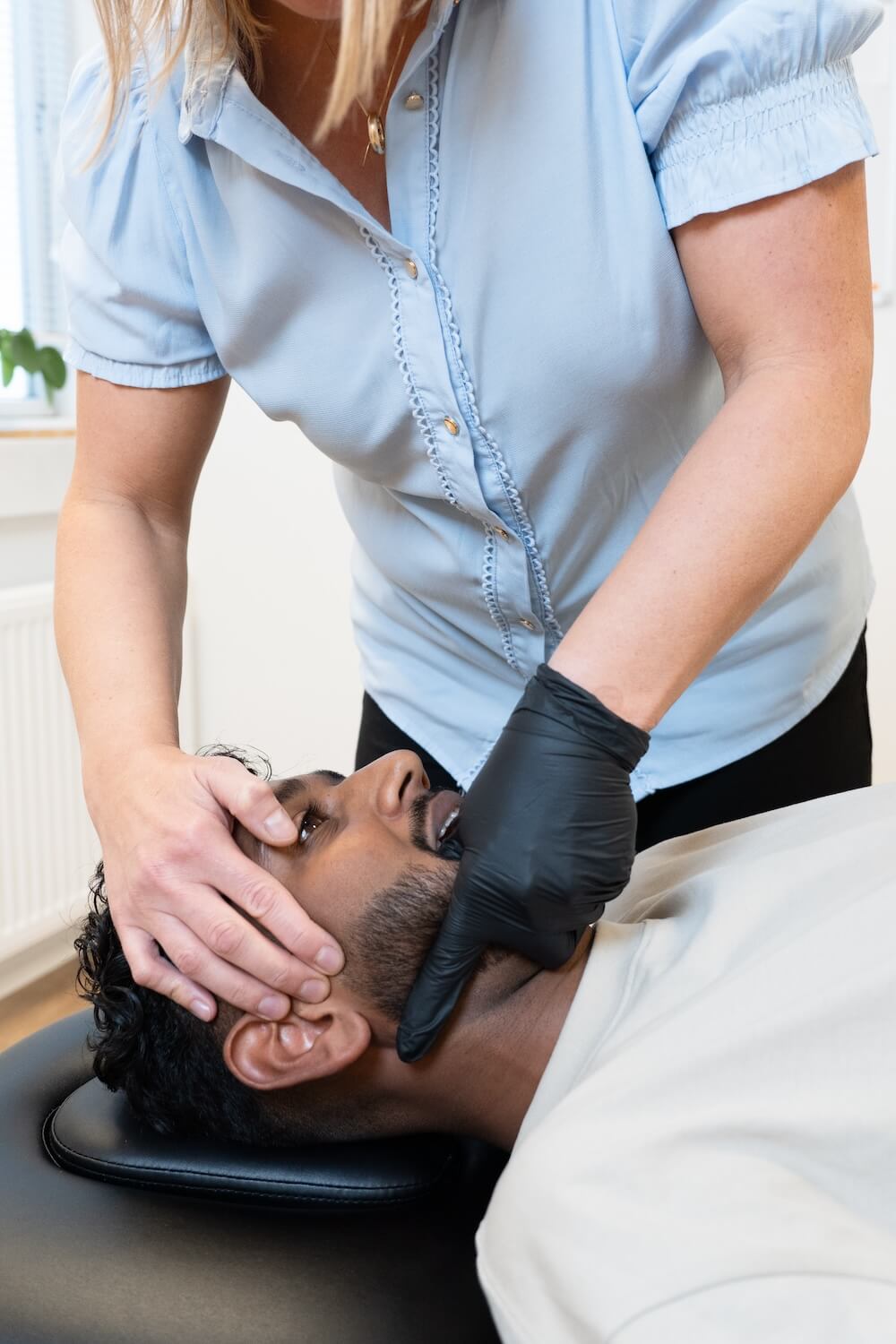
Kissing disease
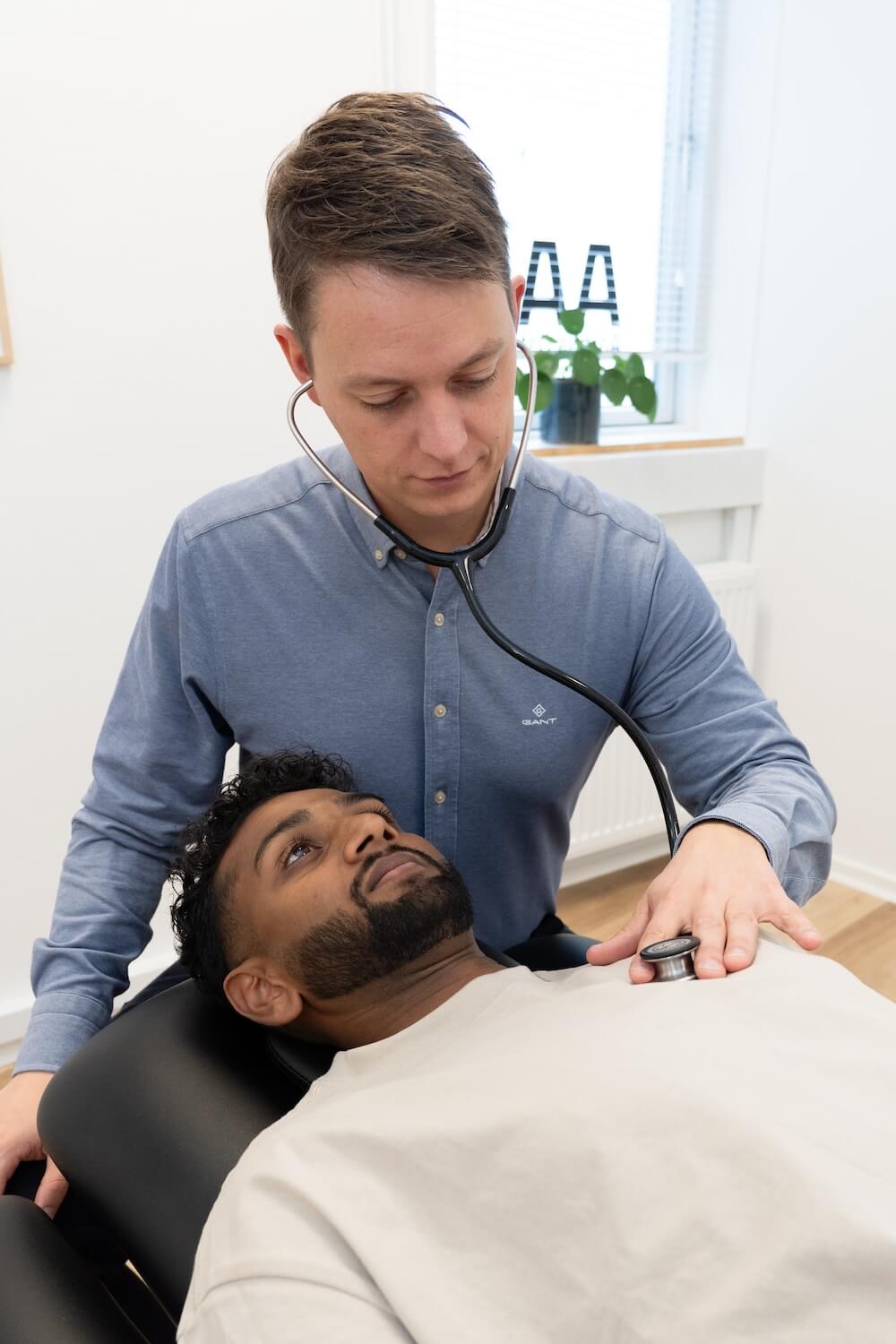
Diabetes mellitus
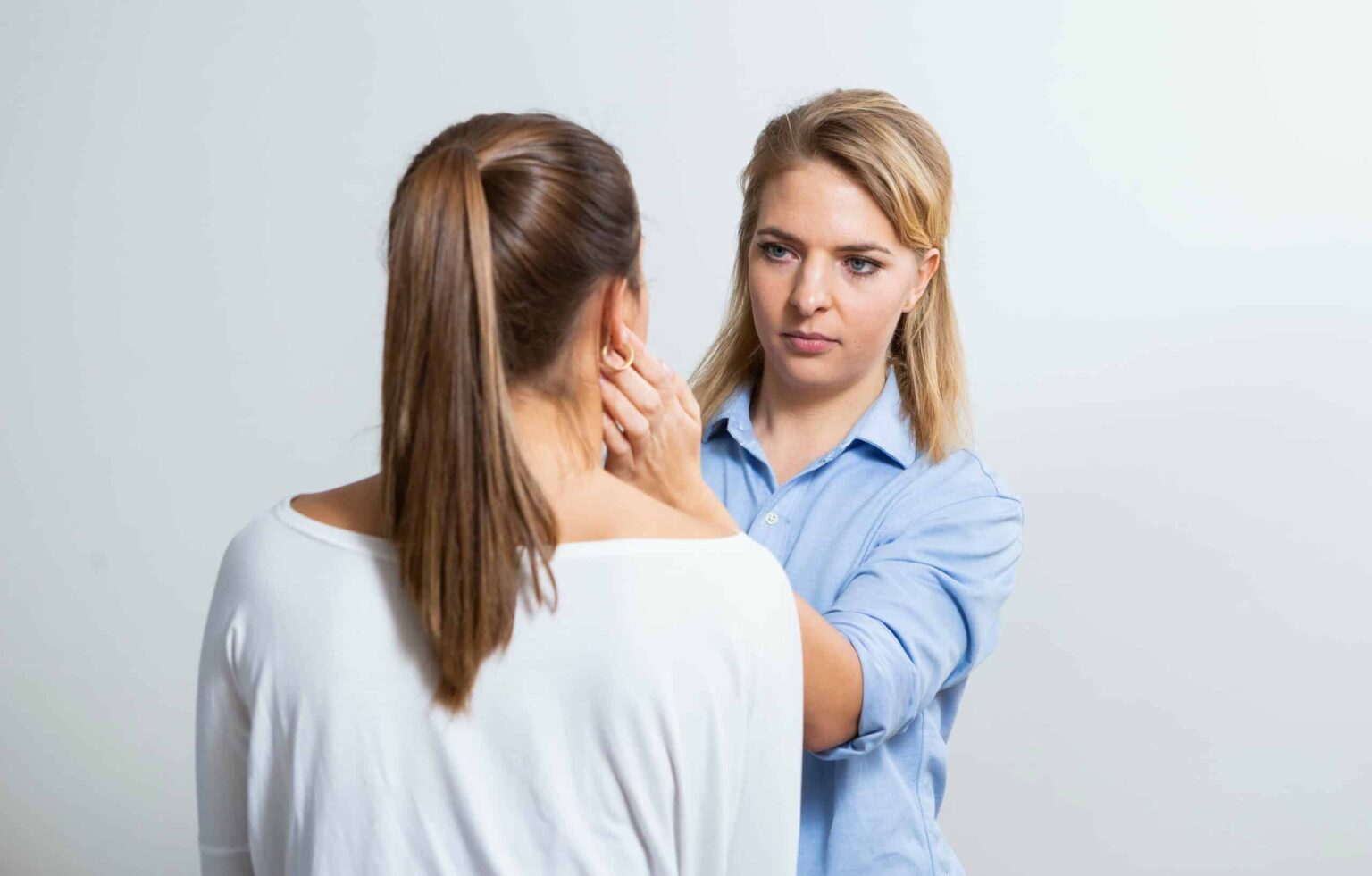
Eye inflammation
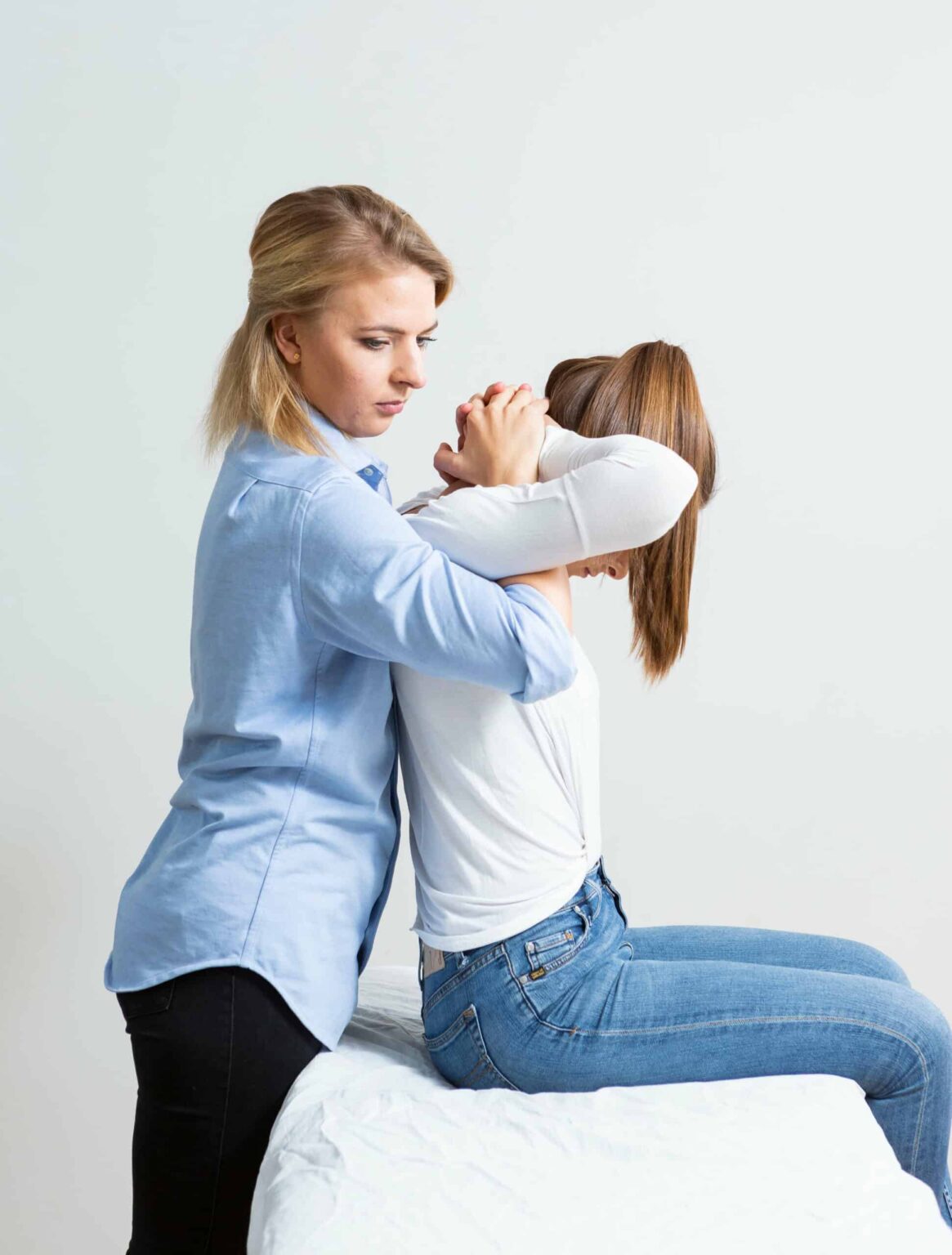
Padel injuries

Sedentary work
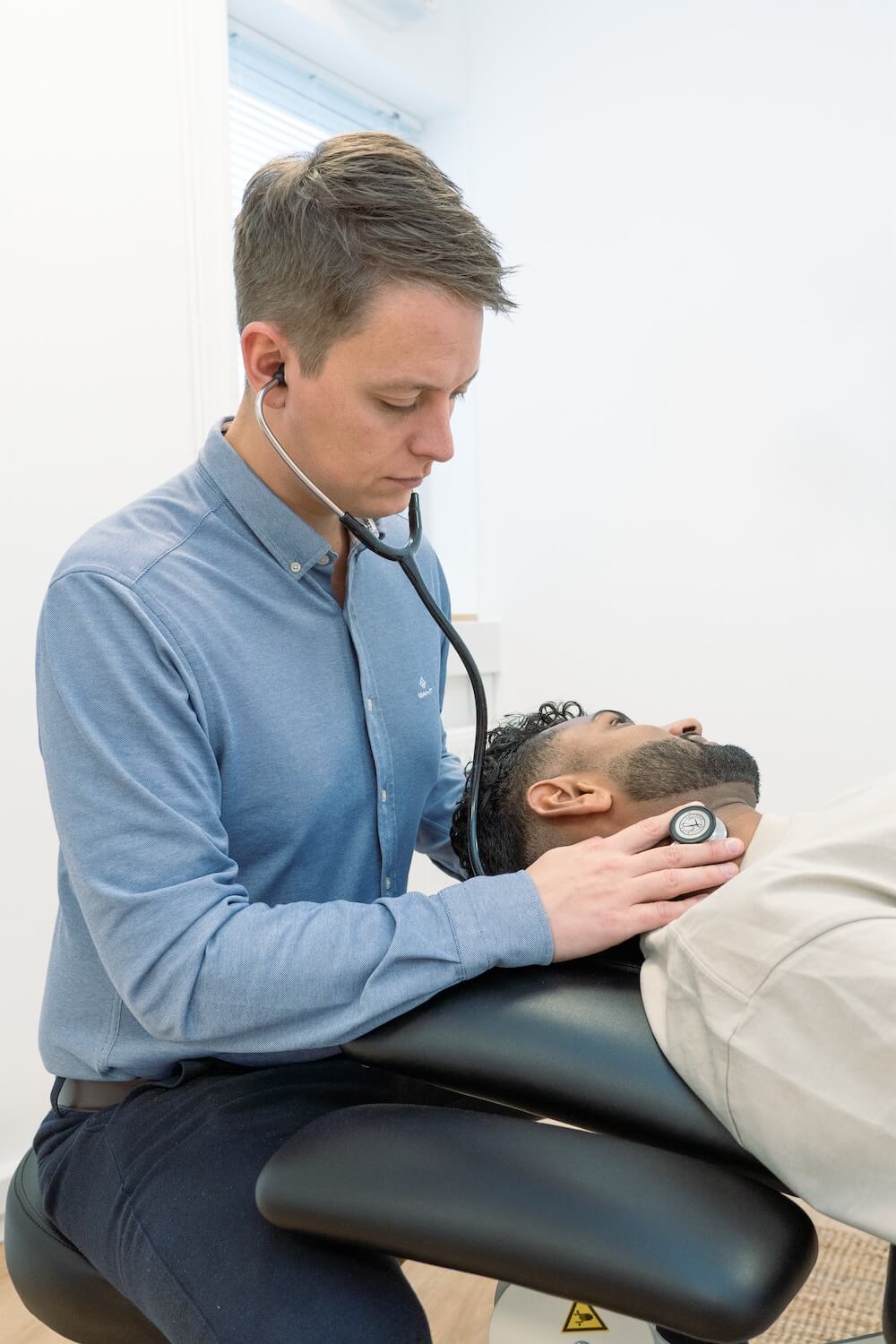
Nicotine and exercise
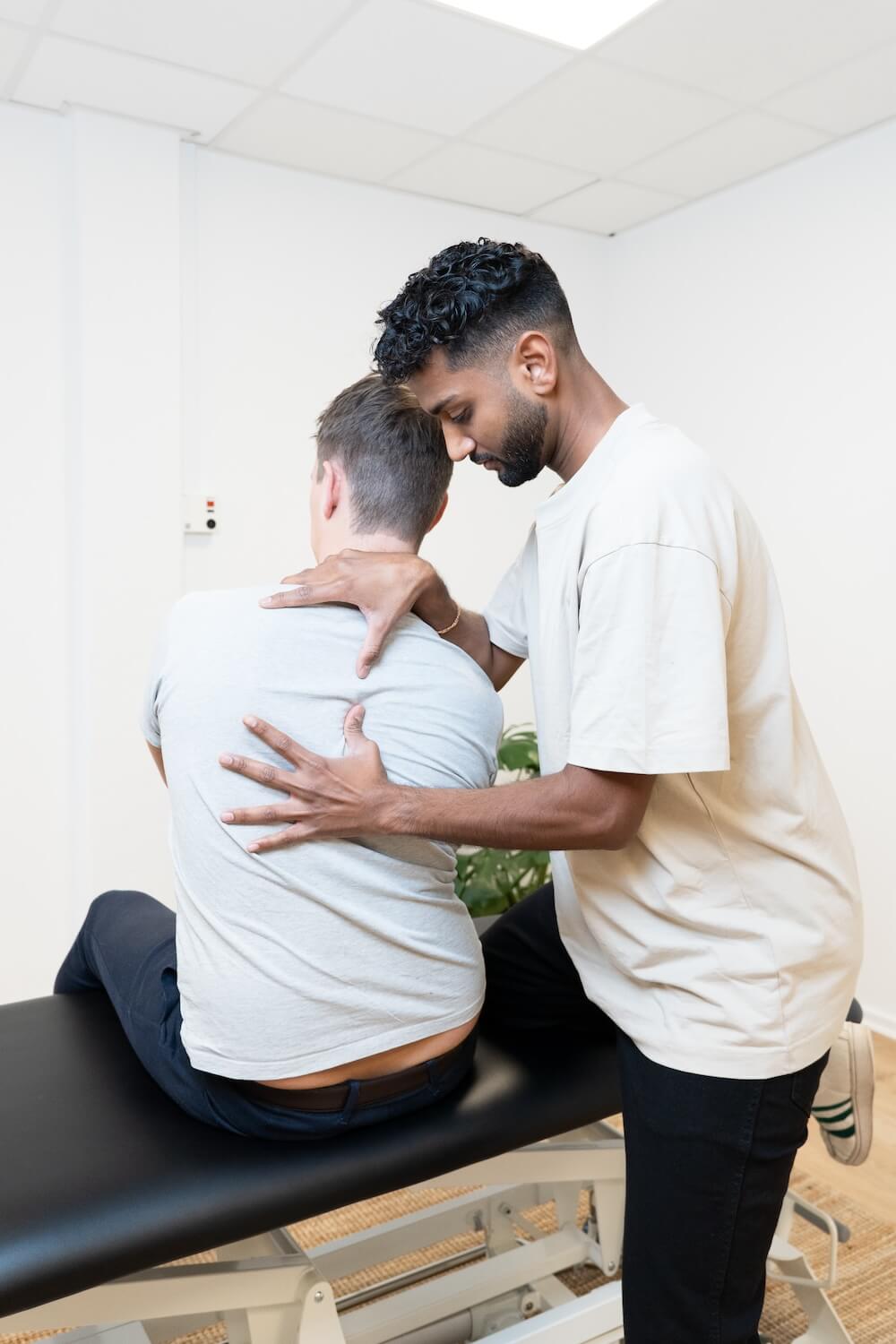
Shingles
